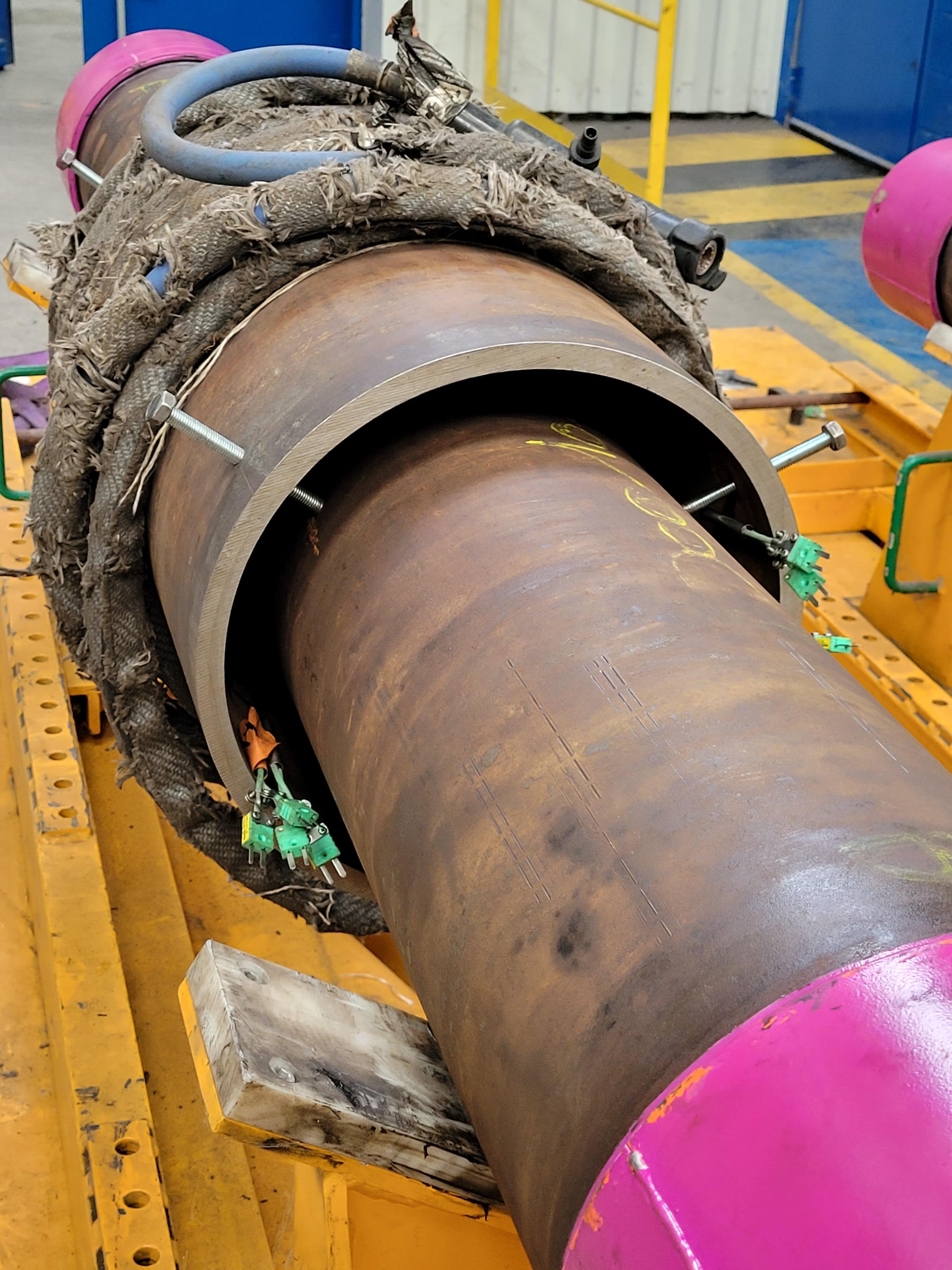Validating VAM® connections for hydrogen storage
Increasing numbers of major energy industry players are preparing to conduct hydrogen underground injection and storage projects. As this solution gains traction, vast amounts of hydrogen will be stored, acting as buffers on supply chains or reserves for future power sources. Vallourec is anticipating energy industry clients’ needs by proactively identifying and certifying tubulars to ensure they are appropriate, tested and properly validated for hydrogen applications.
Physical connections testing with hydrogen brings additional complexity as well as health and safety (HSE) concerns. This highly flammable—and therefore potentially very dangerous gas—requires careful handling and expert knowledge. In addition, existing connection qualification standards are not considered fully relevant for hydrogen wells, so researchers must tailor their tests and qualifications accordingly. Vallourec is now working to ensure our connections have been properly tested and have the required properties for this very specific application.
Designing a new testing protocol
Typically, when testing connections for use with gases, engineers use helium as a gas tracer to detect any leakages. However, Vallourec experts evaluated hydrogen’s properties and found that helium may not accurately reflect potential hydrogen leakage. This meant a brand-new protocol had to be developed.

Designing a new testing protocol
Vallourec therefore used a gas mixture of 5% hydrogen to 95% nitrogen to perform the tests after France’s Centre Technique des Industries Mécaniques (CETIM) laboratory proved that at this ratio, the gas behaves the same as 100% hydrogen. This 5%/95% mixture enhances safety when performing the tests without sacrificing accuracy.
“Using this knowledge, we designed a rigorous new protocol to test and qualify our VAM® 21 connection,” says Pierre Martin, R&D Manager at Vallourec Research Center for Connections (VRCC). “It involved adapting our testing device to detect hydrogen and helium leaks using a new spectrometry methodology. As a result, we’ve been able to verify our connections to a leakage acceptance criterion that is 10 times more stringent than for Oil Country Tubular Goods (OCTG) applications.”


Results that speak for themselves
Our engineers were able to test VAM® 21 connections in-house, using Vallourec’s testing frames that can apply up to 3,000 T of tension and 2,500 T of compression. They can also simulate bending up to 2,000,000 N.m and gas pressure up to 2,400 bar (34,809 Psi) on full-scale connections.
With this equipment, the researchers studied VAM® 21’s behavior at temperatures and tensions relevant for the storage of hydrogen. Tests performed on 9 5/8” VAM® 21 connections successfully covered internal pressures of up to 275 bar (4,000 Psi), with a maximum tension of 440 T and maximum compression of 440 T. The tests also covered temperatures ranging from 10°C to 70°C (50° to 158°F). These indications were shared by Vallourec customers working on typical projects.

Based on Vallourec’s expertise and extensive experience in this sector, company engineers anticipate hydrogen usage to be much more cyclical than is the case with natural gas. As a result, almost 6,000 cycles were performed, including cycles that varied in temperature, pressure and compression to simulate seasonal storage modes.
Committed to being part of the solution
Vallourec is committed to making this solution accessible to more operators. “For hydrogen applications to gain traction, companies have to use technology that ensures projects are safe, reliable and affordable in the long term,” Vincent explains.
The energy industry is witnessing a general acceleration in the pace of projects and products available, and more and more funding is being secured for hydrogen-related projects. The International Energy Agency’s Net Zero by 2050 plan predicts that, based on trends in natural gas storage, hydrogen storage capacity must reach around 50 Mt by 2050. As a result, this complex but potentially rewarding solution is fast becoming a material reality for energy players across the globe. The need for technical solutions will increase rapidly as the number of hydrogen projects grows.
Thanks to the expertise, hard work and dedication of our research teams, Vallourec has begun to fulfill client orders with the first VAM® 21 connections for a hydrogen storage pilot project already delivered.
With these results, Vallourec reaffirms its commitment to preparing and qualifying our materials and connections for hydrogen applications now. We are helping pave the way for vital and sweeping change, ensuring we play our part in combating climate change.
Partnering with our clients every step of the way
One of the greatest strengths of Vallourec’s pioneering testing protocol is the involvement of our clients. Drawing on our close and long-term relationships with them, we are able to tailor both our testing protocols and our solutions to meet their needs perfectly. As we move forward, qualifying more and more sizes for this application, we pledge to keep client needs at the top of our agenda, to make sure we are performing the most relevant tests and creating the best solutions to help them build a greener future.
